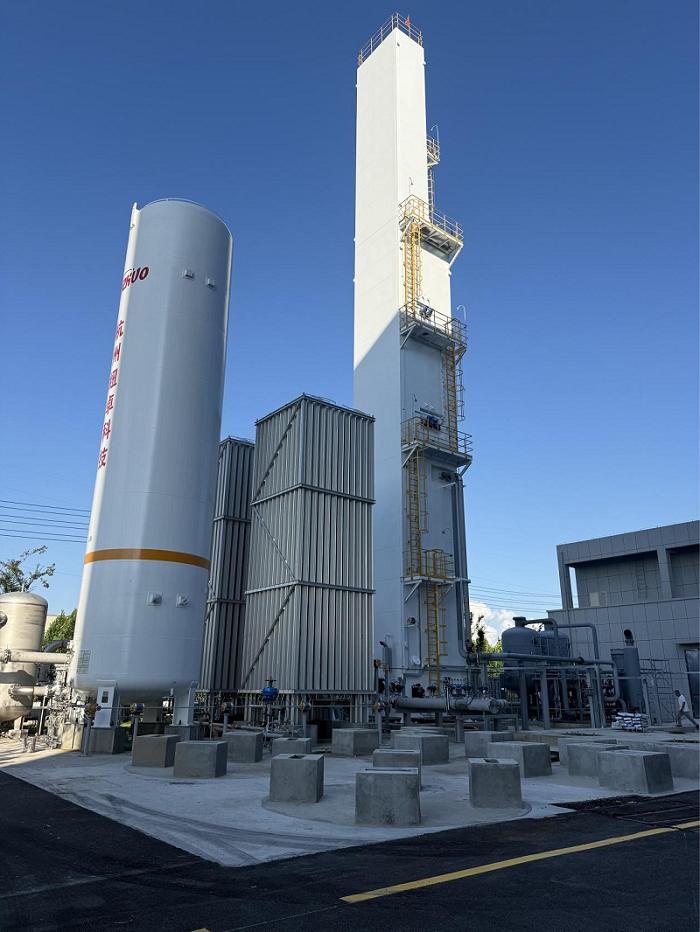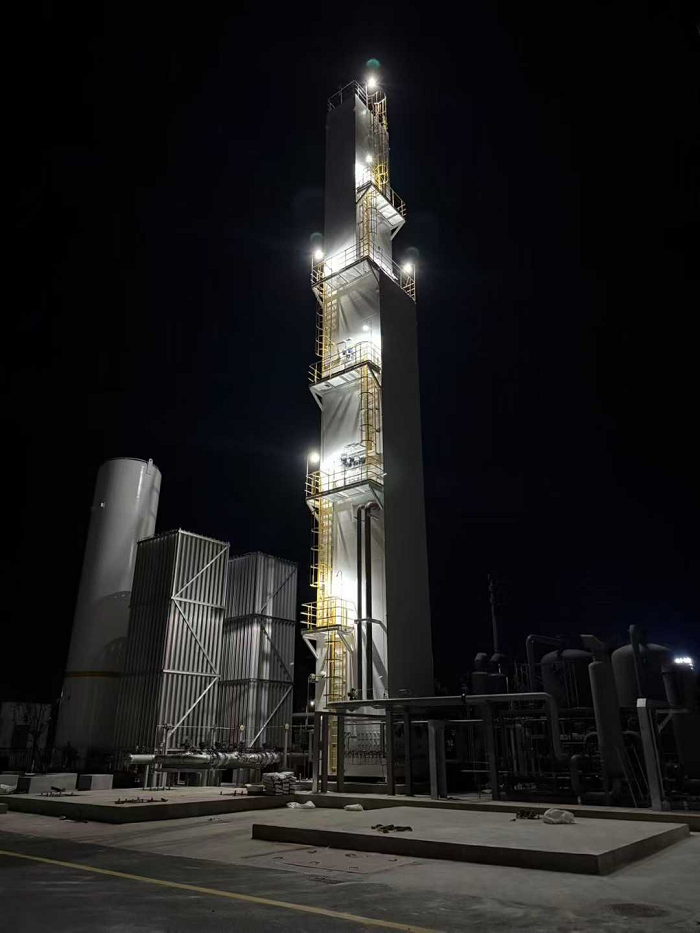Cryogenic air separation (low-temperature air separation) and common nitrogen production equipment (such as membrane separation and pressure swing adsorption nitrogen generators) are the main methods for industrial nitrogen production. Cryogenic air separation technology is widely used in various industries due to its efficient nitrogen production capabilities and excellent purity. This article will thoroughly examine the advantages and differences between cryogenic air separation and nitrogen production equipment, conducting a comparative analysis in terms of nitrogen purity, equipment application, and operating costs, in order to provide a reference for choosing the appropriate nitrogen production technology. Nitrogen purity
One significant advantage of deep cryogenic air separation for nitrogen production is that it can achieve extremely high nitrogen purity. Deep cryogenic air separation can typically produce nitrogen with a purity of over 99.999%, which is crucial for applications that require extremely high purity nitrogen, such as electronics manufacturing, chemical synthesis, and aerospace industries. In contrast, membrane separation nitrogen production equipment can only provide nitrogen with a purity of 90% to 99.5%, while pressure swing adsorption (PSA) nitrogen production equipment can provide nitrogen with a purity of up to 99.9%, but still cannot match the performance of deep cryogenic air separation. Therefore, deep cryogenic air separation is more competitive in industries that require high-purity gases.
Nitrogen production volume
Deep cryogenic air separation units have the ability to produce large quantities of nitrogen, making them particularly suitable for scenarios with high nitrogen demand, such as steel mills and chemical plants. Because deep cryogenic air separation liquefies air at low temperatures and then separates nitrogen and oxygen, its single-unit production capacity can reach hundreds or even thousands of cubic meters per hour. In contrast, membrane separation and pressure swing adsorption nitrogen production equipment have relatively limited production capacity, typically suitable for small and medium-sized industrial users with nitrogen demand ranging from tens to hundreds of cubic meters per hour. Therefore, in scenarios with high nitrogen demand, deep cryogenic air separation can better meet the needs of enterprises.
Operating costs
From the perspective of operating costs, deep cryogenic air separation equipment is more economical for large-scale continuous operation. The initial investment of deep cryogenic air separation equipment is higher, but during long-term operation, the unit gas cost will be relatively lower. Especially in scenarios with high demand for nitrogen and oxygen simultaneously, deep cryogenic air separation can significantly reduce the overall cost of gas production through co-production. On the contrary, pressure swing adsorption nitrogen production and membrane separation technologies have higher energy consumption, especially when producing high-purity nitrogen. The operating costs are relatively higher, and the operating economic efficiency is not as high as deep cryogenic air separation when the nitrogen production volume is large. Applicable scenarios
The cryogenic air separation unit is widely used in large-scale industrial production where both nitrogen and oxygen are required, such as in the steel, chemical, and petrochemical industries. On the other hand, pressure swing adsorption nitrogen production equipment and membrane separation equipment are more suitable for small and medium-sized enterprises, especially in scenarios where nitrogen needs to be obtained flexibly and quickly. The cryogenic air separation system requires certain pre-planning and installation time, and is suitable for large-scale facilities with long-term stable operation. In contrast, membrane separation and pressure swing adsorption equipment are relatively smaller in size, making them easy to move and install quickly, and are suitable for short-term projects or places where flexible layout is required.
Gas production capacity
Another major advantage of cryogenic air separation is its gas production capacity. Cryogenic air separation not only produces nitrogen but can also produce other industrial gases such as oxygen and argon, which have important applications in steel smelting, chemical production, and other fields. Therefore, cryogenic air separation technology is suitable for enterprises with various gas demands and can significantly reduce the overall gas procurement cost. In contrast, pressure swing adsorption and membrane separation equipment usually can only produce nitrogen, and the purity and output of the produced nitrogen are subject to many restrictions.
Environmental protection and energy efficiency
Cryogenic air separation systems also have certain advantages in terms of environmental protection and energy efficiency. Since cryogenic air separation uses a physical separation method and does not require chemical agents, it does not cause environmental pollution. In addition, through improved design and heat recovery technology, the energy utilization efficiency of cryogenic air separation equipment has been significantly improved. In contrast, pressure swing adsorption nitrogen production equipment requires frequent adsorption and desorption processes, resulting in relatively high energy consumption. Membrane separation nitrogen production equipment, although has relatively lower energy consumption, has limited application scope, especially in cases of high purity and large flow requirements, its energy utilization efficiency is not as good as that of cryogenic air separation equipment.
Maintenance and operation
The maintenance of cryogenic air separation systems is relatively complex and requires experienced technicians for management and regular maintenance. However, thanks to its stable performance and long equipment lifespan, cryogenic air separation units can maintain efficient operation in long-term operation. In contrast, the maintenance of membrane separation and pressure swing adsorption equipment is relatively simple, but their core components, such as adsorbents and membrane components, are prone to contamination or aging, resulting in short maintenance cycles and high maintenance frequencies, which can affect the long-term economic and reliability of the equipment.
Summary
In conclusion, the deep cooling air separation technology has significant advantages over common pressure swing adsorption and membrane separation nitrogen production equipment in terms of nitrogen purity, production volume, operating costs, and gas co-production. Deep cooling air separation is particularly suitable for large industrial enterprises, especially in scenarios where there are high requirements for nitrogen purity, oxygen demand, and production volume. For small and medium-sized enterprises or those with flexible nitrogen demand and relatively lower production volumes, pressure swing adsorption and membrane separation nitrogen production equipment are more economically viable options. Therefore, enterprises should make reasonable choices based on their actual needs and select the most suitable nitrogen production equipment.
We are manufacturer and exporter of air separation unit. If you want to know more about us:
Contact person:Anna
Tel./Whatsapp/Wechat:+86-18758589723
Email :anna.chou@hznuzhuo.com
Post time: Aug-25-2025
 Phone:
+86-18069835230
Phone:
+86-18069835230 E-mail:lyan.ji@hznuzhuo.com
E-mail:lyan.ji@hznuzhuo.com








